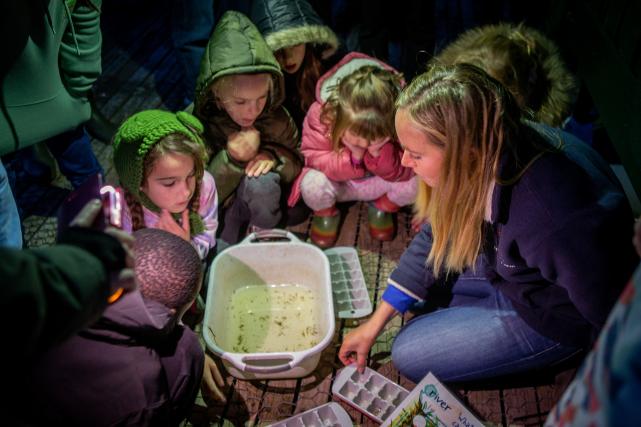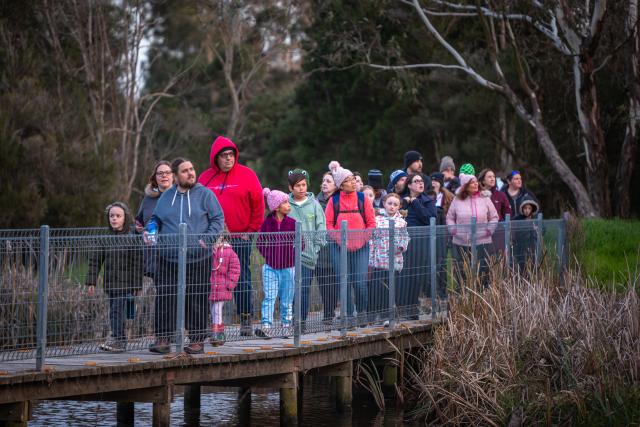On Wednesday 24 May, Myuna Farm held an evening nature walk through the farm wetlands to celebrate UN’s International Day for Biological Diversity.
The community gathered at Myuna Farm and caught the electric train down to the wetlands to learn about biodiversity and the flora and fauna found in the local area.
The activities included a group walk and talk about the importance of the wetlands and the biodiversity within, with a focus on the large population of Grey Headed flying foxes.
The community also participated in a frog and bird call play-back activity using citizen science apps, as well as a macro invertebrate and water bug identification activity and a seed dispersal demonstration, which involved examining the various ways that seeds can be dispersed.
“The guided walk through Myuna Farm’s wetlands was a chance for the community to immerse themselves in the rich biodiversity of the local area,“ City of Casey Manager Sustainability and Environment Micheal Jansen said.
Wetlands like the one at Myuna Farm play a vital role in the healthy function of local ecosystems.
“The various organisms within the wetlands rely on each other for food sources and habitats, forming intricate ecological connections,“ Mr Jansen said.
“For example, the fruit bats found in the wetlands contribute to the pollination of the local Eucalyptus forests.“
The water that enters the wetlands is largely from storm water drains.
This includes drainage from roads and roofs.
Mr Jansen said the contents that enter the run off from local drainage can have a big impact on the organisms and their ability to survive in the wetlands.
“Maintaining a healthy wetland environment is also crucial for functions such as flood control, filtration of toxins and pollutants and for native Australian species to thrive.“
Wetlands will act as a big sponge and fill up with water, slowing flows in local creek systems.
The special plants found growing in the wetlands work to filter toxins and pollution, improving the water quality flowing through to Dandenong Creek and eventually to the bay.
The wetlands also provide unique habitat for many native Australian species, including several threatened species.
Local wildlife find their homes in more places than just bushland.
Patches of roadside vegetation, farmlands and urban areas are also habitats for wildlife, and are not always managed and protected.
Community support for biodiversity is the best way to ensure wildlife in all habitats of the region can continue to thrive.
“Education helps foster a deeper awareness and appreciation for nature, to ensure a sustainable and thriving planet for future generations,“ Mr Jansen said.
“Supporting local biodiversity requires a collective effort from the community.“
Mr Jansen said there are many ways for the local community to support biodiversity in Casey.
“Small actions such as making sure what goes down the drain at home or on the streets isn’t toxic, as the drains flow through to local wetlands such as Myuna Farm’s, and not littering as rubbish also ends up in our wetlands and waterways,“ he said.
“Other ways include planting native indigenous plants to support biodiversity in the your backyard, installing nesting boxes and bird baths and getting involved with a volunteer group, such as Landcare, for more wide scale native planting.“
Keeping pets contained and making sure fruit tree netting is safe for local wildlife are also easy ways to contribute to the health of local ecosystems.
“Other things may be as simple as driving slower at dusk and dawn which is when many native species are out feeding and are at higher risk,“ Mr Jansen said.
“You can participate in citizen science, such as iNaturalist, where you can contribute to species conservation without having to be an expert.“
Mr Jansen said it is important o spread “the word that biodiversity is important and worth celebrating and preserving.“








